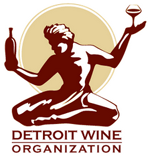1. What grape is normally NOT used in Champagne?
a. Chardonnay
b. Cabernet Sauvignon
c. Pinot Noir
d. Pinot Gris
2. What country is true Champagne made in?
a. France
b. Spain
c. United States
d. Italy
3. Which of these Champagne descriptions is the dryest?
a. Brut
b. Extra-dry
c. Sec
d. Demi-Sec
4. What is the name of a Spanish sparkling wine?
a. Rioja
b. Sherry
c. Cava
d. Frexa
5. What is the name of an Italian sparkling wine?
a. Chianti
b. Amarone
c. Marsala
d. Asti Spumanti
6. What is the name of a German sparkling wine?
a. Riesling
b. Liebfraumilch
c. Sekt
d. Spaegle
7. What temperature should Champagne be served at?
a. 35° F
b. 45° F
c. 55° F
d. 65° F
8. Which food would not go well with Champagne?
a. Sushi
b. Fried Clams
c. Steak in Mushroom Gravy
d. Brie Cheese
9. What kind of glass is best for Champagne?
a. A tall, thin, fluted glass.
b. A short, fat, highball glass.
c. An angled glass, sort of like a martini glass, with a wider top than bottom.
d. A wide glass, where the mouth is very wide and then curls slightly at the top.
b. No, they didn’t
|
11. How dry is the Extra-Brut champagne ?
a. between 0 & 4 g of sugar per litre
b. between 2 & 6 g of sugar per litre c. between 0 & 6 g of sugar per litre |
|
12. What is the average alcohol contents of the Ratafia de la Champagne ?
a. 12°
b. 18° c. 25° |
|
13. In a white champagne the grape Pinot Meunier is ?
a. white
b. black c. both |
|
14. How many villages classified Premier Cru exist in Champagne ?
a. 17
b. 40 c. 255 |
|
15. How many types of cut are allowed in Champagne ?
a. 2
b. 3 c. 4 |
|
16. How many years in bottle does a vintage champagne need to be sold?
a. 30 months
b. 32 months c. 36 months |
|
17. When was the muselet invented?
a. 1723
b. 1844 c. 1926 |
|
18. Champagne does not fear?
a. vibrations
b. light c. coldish temperatures (5-12°) |
|
19. A rosé de saignée is
a. a champagne white to which we had red wine
b. a pink from Provence c. A pink champagne obtained by maceration of black grapes |
|
20. When does the harvest take place?
a. Autumn
b. Spring c. Winter |
|
21. Chigny Les Roses is a village classified at
a. 94%
b. 100% c. 107% |
|
22. A ‘Grand Cru’ Champagne can not contain?
a. Meunier
b. Pinot Noir c. Chardonnay |
|
23. Which grape brings the finesse to the Champagne?
a. Pinot Noir
b. Meunier c. Chardonnay |
|
24. What is the signification of the letters ‘MA’ on some labels?
a. Manipulant Agréé
b. Mauvaise Année c. Marque d’Acheteur |
|
25. What was the first export market for champagne in 2004 ?
a. USA
b. Japan c. United-Kingdom |
|
26. The production year on labels of vintage champagne is
a. compulsory
b. not compulsory c. does not matter |
|
27. The Nabuchodonosor can contain how many litres?
a. 10
b. 15 c. 20 |
|
28. What is the ideal glass for tasting champagne?
a. The flûte
b. The gobelet c. The pint |
|
29. Where is the champagne region?
a. West of Paris
b. South of Paris c. East of Paris |
Answers to the Sparkling quiz
1-b, 2-a, 3-a, 4-c, 5-d, 6-c, 7-b, 8-c, 9-a, 10-a,11-c, 12-b, 13-b, 14-b, 15-c, 16-c, 17-b, 18-c, 19-c, 20-a, 21-a, 22-a, 23-c, 24-c, 25-c, 26-a, 27-b, 28-a, 29-c,
Jevon is a board member


My glass is definitely not 4 oz. Especially if its a sulppe Rhone Valley or crisp central Californian pinot noir. If you need to measure the red wine then why bother at all.